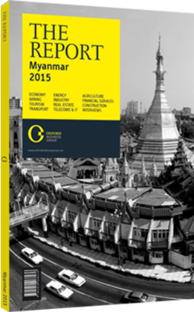The government is focusing on strengthening the pharmaceuticals industry to meet local demand
Valued at $480m in 2013 by the Ministry of Commerce, Myanmar’s pharmaceuticals industry offers drug makers a new opportunity, particularly over-the-counter manufacturers who stand to benefit from the country’s reopening. A dramatic increase in health expenditure coupled with rising per capita income is set to see the value of the industry grow to $945m in 2015, a nearly 97% rise in two years. The relaxation of most junta-era sanctions and a new foreign direct investment law passed in 2012 has helped to increase foreign investment in the country, which, according to the Asian Development Bank, will triple per capita income to around $2500 per annum by 2030.
The Challenge
While prospects for growth are high, there are still many hurdles for new entrants. It is estimated by the World Health Organisation (WHO) that in 2012, the latest year for which figures were available, the country had only 0.6 physicians per 1000 people. Myanmar’s Ministry of Health (MoH) estimates that the country has 29,832 doctors in 2012/13, divided between 12,800 in the public sector and 17,032 in the private sector. With a high demand for general practitioners, and a resulting low number of specialists, the use of drugs in areas such as oncology or endocrinology is significantly low. In 2013 an average of $8 per capita was spent on pharmaceuticals, which is less than the $58 spent in neighbouring Thailand.
The use of illegally imported drugs is another major concern. Accounting for 20% of the market, these medications are often of poor quality, but with 70% of the population being rural, demand for cheaper products is unsurprisingly high. According to the MoH’s Department of Food and Drug Administration (FDA), 17,000 medicines have been registered in the country, but with the cost of registration at around $1000 and approval time being approximately 24 months, many agents opt for illegally imported pharmaceuticals crossing the border from China, India or Thailand.
In order to combat the illegal trade, the MoH announced in April 2014 that it would set up testing facilities at 15 border posts to detect low quality or unregulated products, with a key focus on anti-malaria medication. The rise in drug-resistant malaria has increased efforts to clamp down on inadequate medicine, after a recommendation from the WHO to replace monotherapy malaria drugs with artemisinin-based combination therapy. However, the FDA’s lack of skilled personnel and modern equipment, such as incubators, can result in medications being shelf-bound for the duration of the application process.
Girish Wadhwa, the managing director for Myanmar at MEGA Lifesciences, told OBG, “There needs to be more improvement at the retail pharmacy level with regards to the handling and storage of pharmaceuticals, such as cold chain management.”
Generic Alternatives
According to MEGA Lifesciences, the leading distributor of pharmaceuticals in the country, medication produced by originator multinational corporations (MNCs) accounted for about 10% of the market, while branded generics made up 37% and more affordable generics contributed the dominant share at 53% with a value of $220m.
As a result of a relatively relaxed regulatory environment, generic products flood the market from neighbouring countries, with India and Thailand accounting for 48% of drug imports. Indian companies have managed to create a solid customer base with each generating $7m annually in Myanmar, according to reports.
New Arrivals
Although the market is severely fragmented, with a growing urban elite and rising demand for Western medicine, various foreign players are on the lookout for potential local partners. For example, DHG Pharmaceutical JSC, Vietnam’s largest medicine producer by market value, in July 2014 announced its goal to increase distribution in Myanmar. Local players are also looking outward: Fame Pharmaceuticals, the largest provider of traditional medicine, is in talks with a South Korean company about clinical trials for a possible flu treatment. Participation from international players should grow steadily and expand offerings.
You have reached the limit of premium articles you can view for free.
Choose from the options below to purchase print or digital editions of our Reports. You can also purchase a website subscription giving you unlimited access to all of our Reports online for 12 months.
If you have already purchased this Report or have a website subscription, please login to continue.

